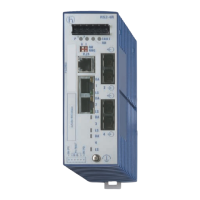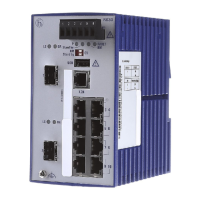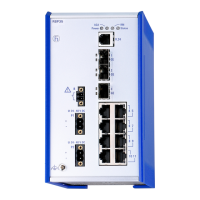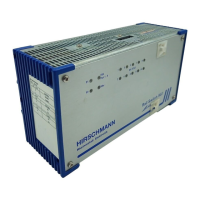Synchronizing the System Time in the
Network
Basic Configuration
Release
6.0
07/2010
7.3
Precision Time Protocol
111
Note: Connect all the connections you need to distribute the PTP information
to connections with an integrated time stamp unit (RT modules).
Devices without a time stamp unit take the information from the PTP and use
it to set their clocks. They are not involved in the protocol.
Enable the PTP function on all devices whose time you want to
synchronize using PTP.
Select the PTP version and the PTP mode. Select the same PTP version
for all the devices that you want to synchronize.
If no reference clock is available, you specify a device as the reference
clock and set its system time as accurately as possible.
PTP mode Application
v1-simple-mode Support for PTPv1 without special hardware. The device
synchronizes itself with received PTPv1 messages.
Select this mode for devices without a timestamp unit
(RT module).
v1-boundary-clock Boundary Clock function based on IEEE 1588-2002 (PTPv1).
v2-boundary-clock-onestep Boundary Clock function based on IEEE 1588-2008 (PTPv2) for
devices with MM23 and MM33 media modules.
The one-step mode determines the precise PTP time with one
message.
v2-boundary-clock-twostep Boundary Clock function based on IEEE 1588-2008 (PTPv2) for
devices with RT modules.
The two-step mode determines the precise PTP time with
two messages.
v2-simple-mode Support for PTPv2 without special hardware. The device
synchronizes itself with received PTPv2 messages.
Select this mode for devices without a timestamp unit
(RT module).
v2-transparent-clock Transparent Clock (one-step) function based on IEEE 1588-2008
(PTPv2) for devices with MM23 and MM33 media modules.
Table 8: Selecting a PTP mode
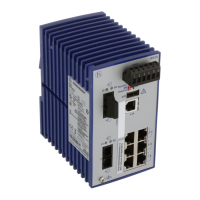
